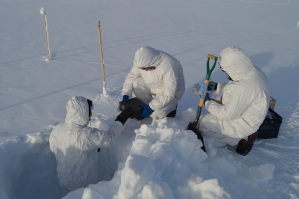 With new monitoring technologies and growing networks of observing systems, the amount of data is increasing rapidly. For the users, it is challenging to analyse data from different sources, and the amount of data in different formats can become overwhelming. As a result, data are still not efficiently used to provide scientific information and knowledge for those who need it. This is where data interoperability comes in, making the use of ArcticDefinitions of the Arctic vary according to environmental, geographical, political, cultural and scientific perspectives. Some scientists define the Arctic as areas having a high latitude, long winters, short, cool summers,... More data easier.
With new monitoring technologies and growing networks of observing systems, the amount of data is increasing rapidly. For the users, it is challenging to analyse data from different sources, and the amount of data in different formats can become overwhelming. As a result, data are still not efficiently used to provide scientific information and knowledge for those who need it. This is where data interoperability comes in, making the use of ArcticDefinitions of the Arctic vary according to environmental, geographical, political, cultural and scientific perspectives. Some scientists define the Arctic as areas having a high latitude, long winters, short, cool summers,... More data easier.
INTERACT, ArcticDefinitions of the Arctic vary according to environmental, geographical, political, cultural and scientific perspectives. Some scientists define the Arctic as areas having a high latitude, long winters, short, cool summers,... More PASSION and SiOS organized a workshop in May 2022 on interoperability and now Anna Sinisalo from GRID-Arendal has written an article on the topic together with Hannele Savela and Øystein Godøy from the INTERACT Data team. The article can be read in its entirety on the Arctic Passion website.
